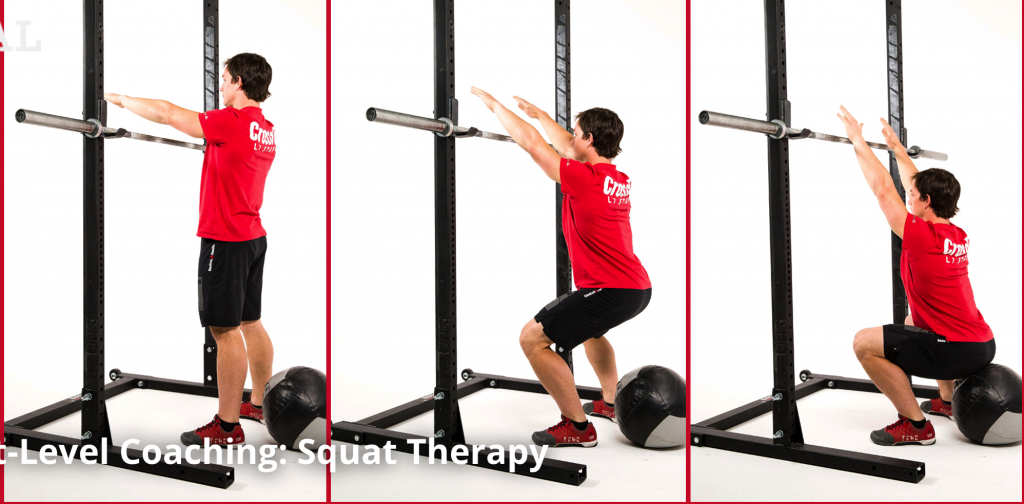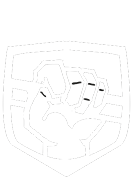Squat Therapy

The air squat is a building block for all other athletic movements, and time spent mastering this fundamental skill is rewarded. Squat Therapy can help you improve: It’s an extremely powerful tool to identify errors and refine the mechanics of the squat.
Have the athlete face the wall, leaving enough distance that he or she can squat to full depth. A barbell in a rack can also be used (see photo above).
In extreme cases, use a medicine ball or plates as a target or to provide support in case the athlete loses control at the bottom of the squat. Ideally, the target should challenge the athlete to squat to a depth where the hip crease is below the top of the knee. Initially, we’re pushing for full range of motion, and the upright torso position might not be achieved at first. In some cases, modifications might be needed for orthopedic conditions (for example, worn-out cartilage in the hip joint) or weakness.
The athlete should extend both arms above the head (with elbows locked and hands raised). Doing so helps switch on the spinal erectors, which are crucial in maintaining an upright torso with a neutral spine. Throughout the movement, the athlete should work to avoid touching the wall with the hands.
STRENGTH
BACK SQUAT 1RM
WOD
3 rds x 2
100 Double Unders
5 Power Cleans 80/55kg
– Rest 5 mins –
2 sets



